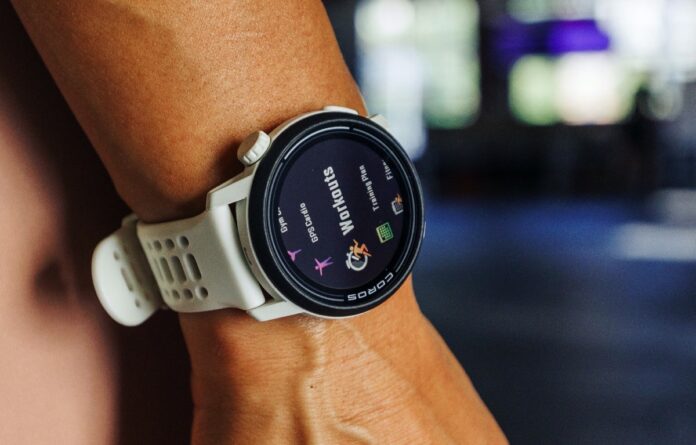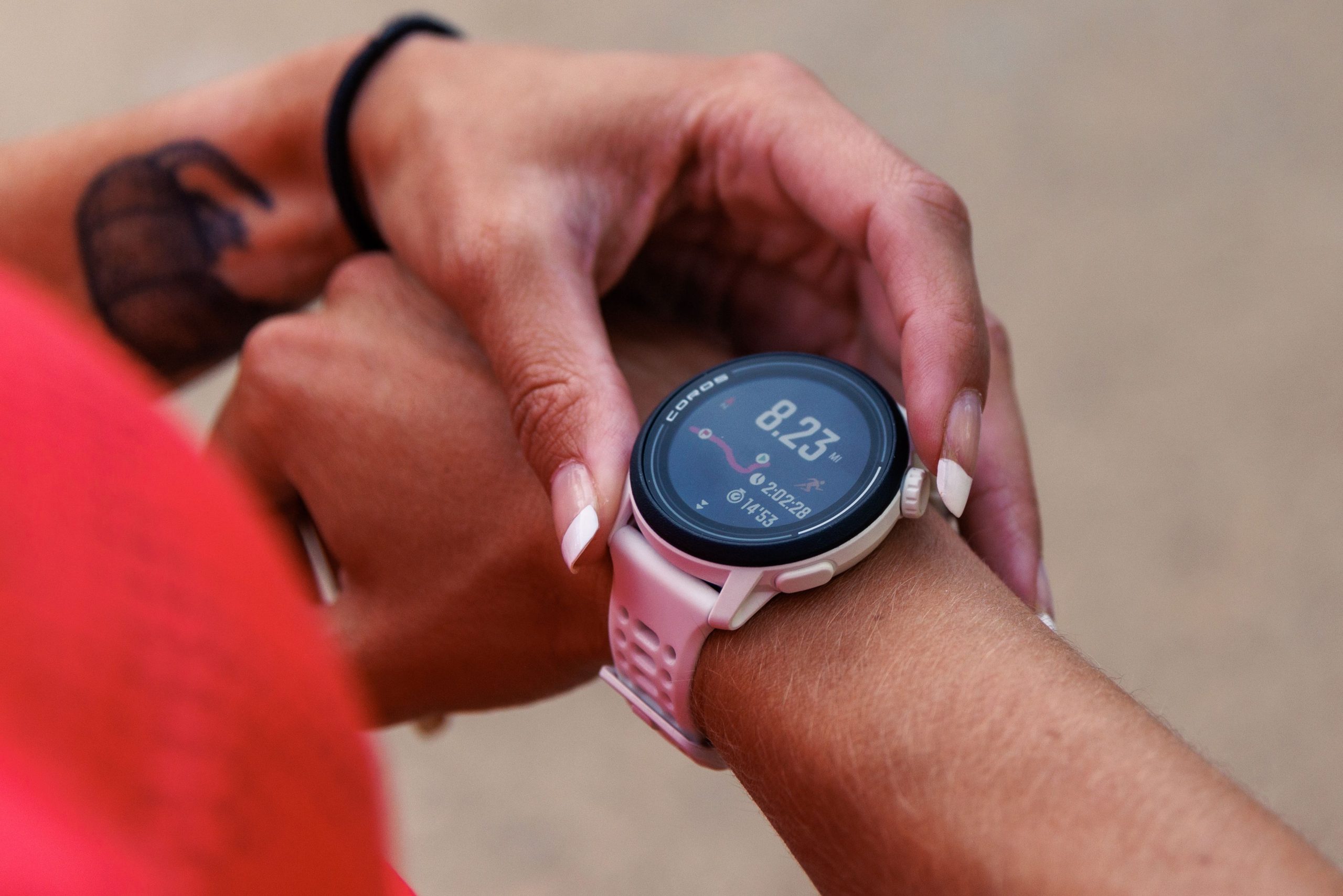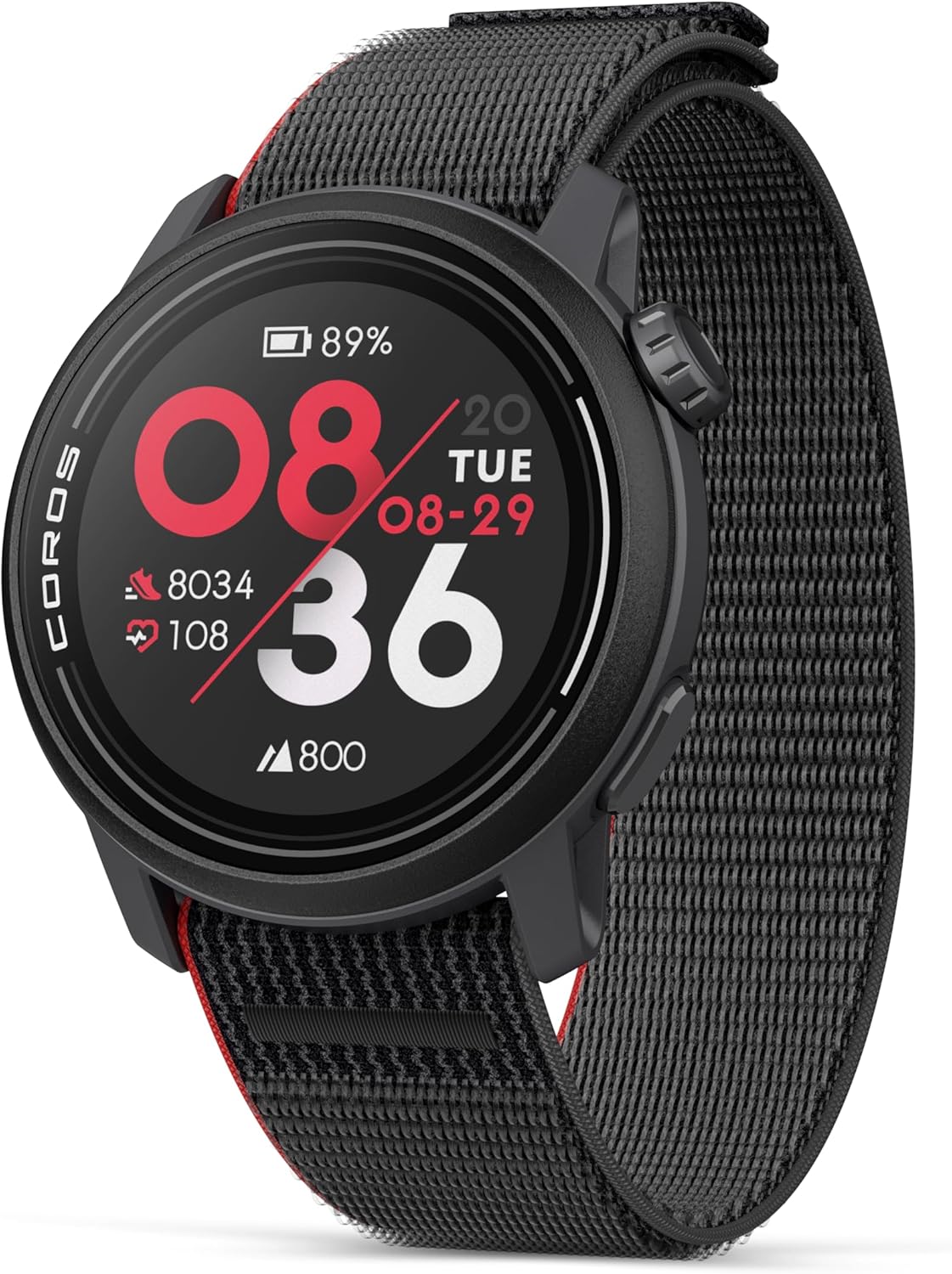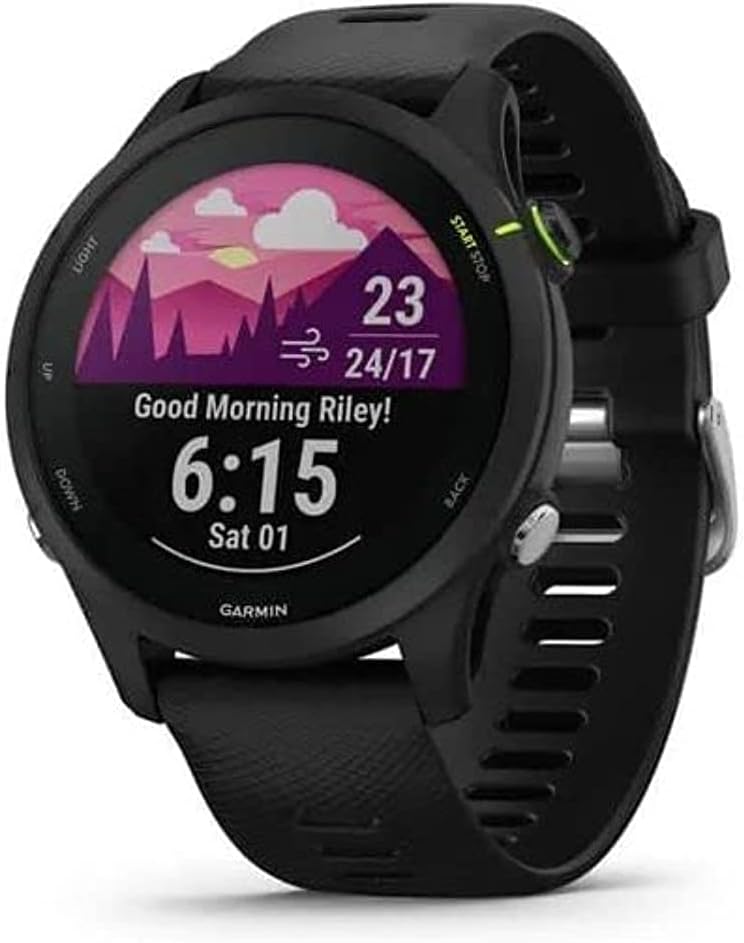You know that feeling when you’re deep into training, your legs are heavy, the morning is dark, and the only thing pushing you out the door is your routine—and your watch? Yeah, we’ve been there too. And when your gear becomes part of your rhythm, you stop seeing it as tech and start feeling it as something more. That’s why choosing between the Garmin Forerunner 255 and the COROS PACE 3 is more than just ticking boxes. It’s about trusting what’s going to work with you—every day, every session, every race.
At first, we thought this would be easy. Two MIP-screen running watches, both with solid reputations and a hunger for performance. But then the details hit. The Forerunner 255 is the veteran—polished, precise, and packed with depth. The PACE 3? It’s lighter, fresher, and surprisingly smart for the price. They seem similar… until you start living with them. And that’s when the story changes.
So, which of these two is the better training companion? Let’s walk through it together—no fluff, no sales talk—just the kind of comparison we’d want to read ourselves.
Screens built for sunlight, not selfies

There’s something refreshingly simple about MIP displays. They don’t shout; they just show up and get the job done. Both watches use memory-in-pixel screens designed for maximum visibility in daylight, and honestly, once you get used to it, going back to glossy AMOLED feels like a step back—at least for outdoor training.
Garmin gives you a choice: 46mm or 41mm, which helps if you’re picky about size or have slimmer wrists. The COROS PACE 3 sticks to a 1.2″ display in a 41mm case, which is compact but still easy to read on the move. And yes, it’s touchscreen—though you’ll mostly end up using the rotating crown, which feels more practical mid-stride.
Where you’ll notice the contrast is in weight. The PACE 3 with the nylon strap weighs just 30g, and you feel it—or rather, you don’t feel it, which is the point. The Forerunner 255 starts at 39g for the smaller version and jumps to 49g in the standard size. It feels more substantial, which some runners like, but on long runs, that featherweight PACE 3 is a revelation.
Materials built to sweat, not impress
This isn’t about luxury finishes. These are tools. Both watches use fiber-reinforced polymer, which isn’t sexy, but it takes a beating. Garmin throws in Gorilla Glass 3 for extra screen toughness, which adds a bit of confidence when you’re brushing past branches or dropping it next to your gym bag.
Aesthetically, it’s a bit of a toss-up. The Forerunner 255 looks mature, maybe even a little boring. The PACE 3 plays with color more—especially in limited editions—and it’s lighter on the wrist and on the eyes. But neither of these is designed to turn heads in a bar. They’re made for people who care more about splits than style.
Endurance that doesn’t ask for a daily recharge

Let’s talk battery. Because this is where expectations go to die—or in the case of the PACE 3, soar.
COROS claims up to 17 days in smartwatch mode and 38 to 41 hours of GPS use. That’s not marketing fluff—it holds up. We went days, sometimes over a week, without charging. And it felt weirdly liberating. The Forerunner 255 lasts up to 14 days in idle use and 30 hours in GPS mode, which is also solid, but not quite in the same league.
And when you use features like dual-frequency GPS, the numbers dip on both devices—but Garmin’s SatIQ helps preserve battery by adjusting GPS quality dynamically, which is clever if you’re running mixed routes.
Now, here’s the kicker: the smaller Garmin 255S cuts those numbers down even further. So if you’re leaning toward a compact format, the PACE 3 becomes a much stronger contender for battery-conscious runners.
Tracking the ground beneath your feet—and way more

Accuracy? Both deliver. Each supports dual-frequency GPS and multi-GNSS, meaning you’ll rarely see your track veer into lakes or zigzag through buildings. Garmin’s SatIQ is an advantage in terms of smart management, while COROS locks on to satellites fast and doesn’t let go easily.
You’ll also find heart rate sensors, SpO2 sensors, barometers, compasses, and gyroscopes on both devices. The usual full suite. No glaring omissions. But then we hit the subtle differences…
Garmin includes ANT+, so if you’re using older accessories—say, a chest strap or foot pod—it’s ready. COROS is Bluetooth-only, which works for most, but it could be a dealbreaker for some.
Also, Wi-Fi is only available on the Garmin if you buy the 255 Music version, while it comes standard on the PACE 3. That makes syncing and updating much easier—especially if you don’t always have your phone on you.
Both have 4GB of storage, but Garmin’s integration with platforms like Spotify or Amazon Music is a plus—again, only on the Music variant. For local file playback, they’re neck and neck.
Software and training: Garmin’s universe vs COROS’s hustle
This is where things split wide open. Garmin’s software universe is deep. You can get lost in it—in a good way. Daily suggested workouts, HRV status, sleep scores, stress tracking, women’s health metrics, Body Battery, Training Readiness—you name it.
There’s also Garmin Pay, Livetrack, incident detection, and integration with third-party training apps. It’s like living in a training simulator. But… some features are behind a paywall or only show up on higher-end models.
COROS, in contrast, gives everything away up front. No tiers. No gates. EvoLab, their training engine, has grown fast. You get VO2 Max, load and fatigue analysis, marathon plans, recovery metrics, and now even running form tests (with an extra pod).
What COROS doesn’t have—yet—are things like Body Battery or safety alerts. And you won’t get running dynamics without external sensors, whereas Garmin offers them from the wrist. That’s not nothing.
But here’s the thing: COROS updates come fast, and they listen to user feedback. The pace of improvement is wild. Garmin’s more deliberate, sure. But sometimes it feels like features trickle out slowly or only land on premium models.
Sports modes and personal tweaks: one’s a buffet, the other a focused menu

Let’s be blunt. Garmin supports over 50 sports modes. Some are niche (hello, pickleball), some are weirdly specific, but they’re there. And the customization runs deep—you can tweak data screens, create complex workouts, load courses, and more.
COROS offers 24 sports modes, and yes, it covers all the basics: run, trail run, treadmill, bike, indoor row, triathlon, hike, strength, cardio, ski. For most users, it’s enough.
Both let you create structured workouts and upload routes. Navigation is breadcrumb-based, though Garmin includes turn-by-turn guidance, which helps in unfamiliar areas.
We’ll give Garmin credit here—it just feels richer when you go beyond basic endurance sports. But for those who live for the run, the PACE 3 rarely feels like it’s missing anything.
The last word: when running is your priority, the choice is clearer than we thought
We didn’t expect to come out of this leaning one way. The Forerunner 255 is incredibly complete, refined, and steeped in years of development. It has polish, history, and a vast training ecosystem.
But—and it’s a big but—COROS surprised us. The PACE 3 delivers stunning battery life, all the essential metrics, fast GPS, and a platform that feels like it was built by runners for runners. It doesn’t drown you in fluff, and it doesn’t nickel-and-dime you on features.
The build? Sure, it’s lighter, even a bit toy-like. And some might miss the extra layer of polish Garmin brings. But when it’s 6am, your calves ache, and you’ve got 15k to log, what you want is a watch that feels invisible, tracks everything, and doesn’t beg for a charge every few days.
The PACE 3 feels like that watch. Focused. Fast. Frictionless. It might not have the decades of Garmin’s software finesse, but what it does offer, it nails—with zero fluff and zero hesitation.
So yeah, this time the disruptor edges ahead. And maybe that’s what makes the choice easier than we thought.


